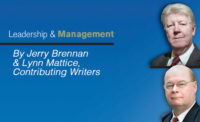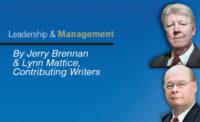Developing Your Security Career Strategy

You can let events impact your life and shape your career, or you can take control. If you are either looking to make a career change from your current role, or leaving government for the private sector, consider taking the following preliminary steps before developing and sending out any resumes:
Review and Analyze Your Professional Environment
Taking a good, hard, unclouded look at the overall professional environment of security will help you determine if this is really the career direction you want. Many people find themselves trapped in jobs and careers by default or coincidence. Conduct a real in-depth analysis of what constitutes the profession; the types and varieties of positions in existence; the direction or trends that security programs are heading within the different industry segments; and most important how do the various corporations value the activity. You should not only talk with your peers, but reach out to others whom you view as leaders in your field. No assessment can be complete without talking to the customer. Gather information by networking with and gleaning information from non-security managers from both in and out of your organization. The success of a security professional within any organization is directly related to the value added that is perceived by management.
Determine Objectives and Career Goals
What do you really want to do and where do you want to be in five years? Developing a clear concise objective will aid you in developing an effective and focused search strategy. A job search can be long, tedious and time consuming. Finding a new senior level position may take a year or more. It’s important to maximize efforts and focus your time. Direct your energies at those opportunities that best fit your aspirations.
Today’s security job market is a very highly competitive environment. Not only are enterprises looking for technically qualified candidates who would “fit in” with their culture, but most importantly individuals who have a clear vision of where they are going. This process also serves as your personal screening tool to filter out those positions that don’t fit in with your goals.
Perform a Self-Assessment
Set aside some time, sit down, and make a complete list of everything that you have to offer an organization. This should be a comprehensive list to identify your skills, capabilities, knowledge and specific areas of expertise. Then for each of your former positions make a complete list of every major accomplishment and resulting impact. Once you have finished this, set it aside, wait a day or two, and then go back over everything. Ask your family, friends, colleagues and professional acquaintances for their honest response about your strengths as they see them. They may mention some valuable qualities that you may have overlooked.
Now organize these in to general categories, such as leadership, management, organizational development and technical. The technical category can be further subdivided into those areas that best reflect what you see in a job description for your target position. Typically these include phases such as: investigations, executive protection, intelligence, cybersecurity, retail loss prevention, international risk analysis, threat assessment, physical security design, brand protection, business continuity and crisis management.
It is not unusual for this to take a week or two, so don’t rush – it will be apparent in the end product. Using a process such as this provides not only the groundwork for what will eventually be your resume, but also helps brings forward those things that you will be using as you proceed in the search process.
Develop Your Communication Strategy
First, you need to development a clear, concise statement that summarizes, in about 20 seconds, who you are and what you do. This position statement can also be used as a summary at the top of your resume. Keep in mind your target audience and what will be perceived relative to their requirements. Get to the point that your can deliver this in a smooth, sincere manner without having to give it a second thought.
Second, develop an exit statement. You’re going to be asked, “Why did you leave your current organization?” Be prepared to explain with no hesitation.
You should also develop a professional background summary in a narrative format that can fit on one page. It makes a great marketing tool and is not as formal as a resume. Second, its content is good practice for the interview when you’ve already done your position statement and asked to“Tell me about yourself.” Your story should be compelling and reflect a continued growth both as an individual and in your professional career.
Now, you’re ready to begin development of your resume, a marketing and search strategy, and how you are going to deliver your message.
Looking for a reprint of this article?
From high-res PDFs to custom plaques, order your copy today!







